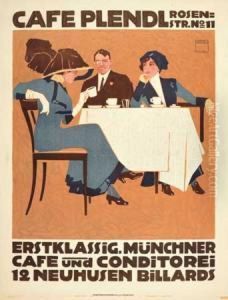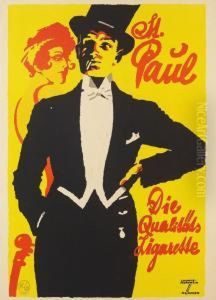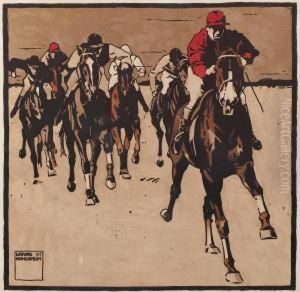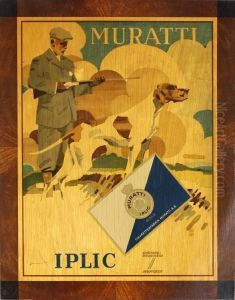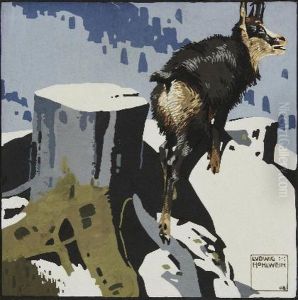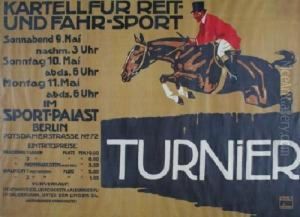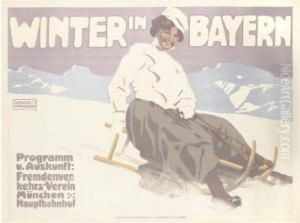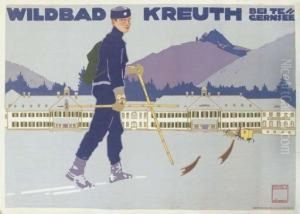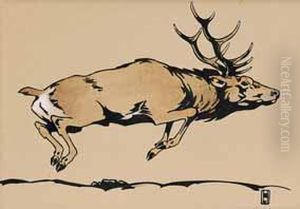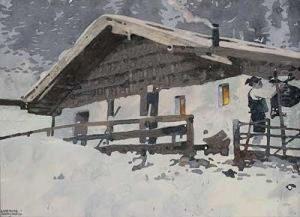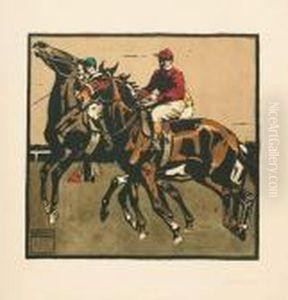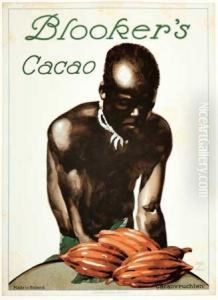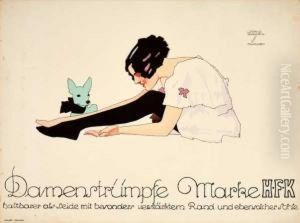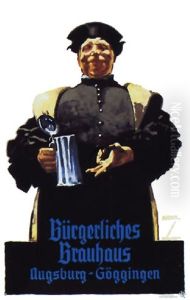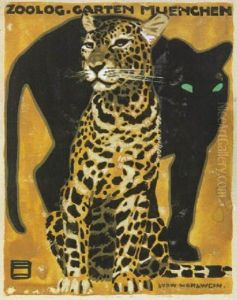Ludwig Hohlwein Paintings
Ludwig Hohlwein was a notable German graphic artist, poster designer, and architect born on July 26, 1874, in Wiesbaden, Germany. He initially trained as an architect and worked in that profession until he was in his thirties. Hohlwein's career in graphic design began around 1906 when he moved to Munich, which, at the time, was a hub for the artistic avant-garde. Here he transitioned into the applied arts and developed a style that would become iconic.
Hohlwein's work is characterized by bold color palettes, flat patterns, and strong, clear forms, often influenced by the Jugendstil movement, also known as Art Nouveau. However, he uniquely blended these elements with a more graphic, hard-edged approach that would come to be associated with the emerging Plakatstil, or 'poster style,' in Germany. His designs were highly sought after for their striking and innovative qualities and were used in a wide array of applications including advertisements, posters for events, and commercial products.
Throughout his career, Hohlwein created over 3,000 posters, marking him as one of the most prolific and influential poster artists of the early 20th century. His clients ranged from commercial companies, like breweries and chocolate manufacturers, to cultural institutions, such as theatres and the Munich Zoo. Hohlwein's ability to capture the essence of a product, event, or service with simple yet dynamic compositions made his work memorable and effective as an advertising tool.
During World War I, Hohlwein's talent was employed in creating propaganda posters. His work during this time and later, especially in the period of World War II, has been a subject of controversy due to his association with the Nazi regime. Like many artists and designers of the time, he produced works that supported the war effort and the government's agenda.
Ludwig Hohlwein's influence on the field of graphic design and poster art is undeniable. His approach to composition and his use of color and form was innovative at the time and continues to be studied and admired. Despite the problematic aspects of his career, his contributions to the visual language of advertising and poster art remain significant.
Hohlwein continued to work up until his death on September 15, 1949, in Berchtesgaden, Germany. His legacy is one that is complex, reflecting both the aesthetic developments of his time and the political turmoil that surrounded him.

